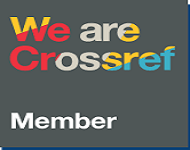Differentiated Learning : The Implementation of Student Sensory Learning Styles in Creating Differentiated Content
DOI:
https://doi.org/10.33394/jp.v10i2.7030Keywords:
Differentiated Learning, Sensory Learning Style, Differentiated Content.Abstract
References
Alhafiz, N. (2022). Profile Analysis of Student Learning Styles for Differentiated Learning at SMP Negeri 23 Pekanbaru. J-Abdi: Journal of Community Service, 1(8), 1913-1922.
Derbala, R., & Yasin, R. M. (2022). Stages of Knowledge, Acceptance, Willingness and Practice of Teacher Teaching Typical Recovery of Different Teachings. Malaysian Journal of Social Sciences and Humanities (MJSSH), 7(4), e001445-e001445.
Dixon, FA, Yssel, N., McConnell, JM, & Hardin, T. (2014). Different Instruction, Professional Development, and Teacher Efficacy. Journal for the Education of the Gifted, 37(2), 111-127.
Goddard, Y., & Kim, M. (2018). Examining Connections Between Teacher Perceptions of Collaboration, Differentiated Instruction, and Teacher Efficacy. Teachers College Record, 120(1), 1-24.
Hardré, PL, & Sullivan, DW (2008). Teacher Perceptions and Individual Differences: How They Influence Rural Teachers' Motivating Strategies. Teaching and Teacher Education, 24(8), 2059–2075. https://doi.org/10.1016/j.tate.2008.04.007
Heng, TT, & Song, L. (2020). A Proposed Framework for Understanding Educational Change and Transfer: Insights from Singapore Teachers' Perceptions of Differentiated Instruction. Journal of Educational Change, 21(4), 595-622.
Irdhina, et al. (2021). Differentiated Instructions Development Model. Jakarta: Kemdikbudristek.
Ismajli, H., & Imami-Morina, I. (2018). Different Instruction: Understanding and Applying Interactive Strategies to Meet the Needs of All the Students. International journal of Instruction, 11(3), 207-218.
Lailiyah, E. (2016). A Differentiated Instruction Approach to Improving the Mathematical Critical Thinking Ability of Middle School Students. Nabla Dewantara, 1(2), 55-64.
Magableh, ISI, & Abdullah, A. (2020). On the Effectiveness of Differentiated Instruction in the Enhancement of Jordanian Students' Overall Achievement. International Journal of Instruction, 13(2), 533-548.
Marlina. (2019). Guidelines for Implementing Differentiated Learning Models in Inclusive Schools. http://repository.unp.ac.id/id/eprint/3220.
Maulana, R., Smale-Jacobse, A., Helms-Lorenz, M., Chun, S., & Lee, O.(2020). Measuring Differentiated Instruction in the Netherlands and South Korea: Factor Structure Equivalence, Correlates, and Complexity Level. European Journal of Psychology of Education, 35(4), 881-909).
Miles, MB, Huberman, AM, & Saldana, J. (2014). Qualitative Data Analysis: a Methods Sourcebook. Third Edition. United States of America: Sage Publications, Inc.
Nurdini, DH. (2021). Differential Learning in Islamic Religious Education and Moral Education Subjects. https: // www. jurnal. kreatifpai.org /index.php /asaatidzah /citationstylelanguage /get/ modern-language association? SubmissionId = 30 & publicationId =30, 2021.
Indonesia. 2022. Permendikbudristek No 26 of 2022 about Mover Teacher. Jakarta.
Pidrawan, IGA, Rasna, IW, & Putrayasa, IB. (2022). Analysis of Strategies, Activities, and Student Learning Outcomes in Writing Learning Supported by Indonesian Language Mobilization Teachers in the City of Denpasar. Journal of Indonesian Language Education and Learning, 11( 1), 75-86.
Putra, IMYT. (2021). Implementation of Flipped Classroom Learning Based on Differentiation Strategies to Improve Students' Critical Thinking Skills. Indonesian Journal of Educational Development, 2(3), 461-471.
Reid, J. (1995). (Ed) Learning Styles in the ESL/EFL Classroom. Heinle and Heinle Publisher.
Saprudin, M., & Nurwahidin, N. (2021). Implementation of Differentiation Methods in Reflection on Islamic Religious Education Learning. Syntax Literate; Indonesian Scientific Journal, 6(11), 5765-5776.
Schiffman and Kanuk. (2009). Consumer Behavior 7th Edition. Jakarta: Index.
Sumarwan. (2018). Consumer Behavior Second Edition. Bogor: Ghalia Indonesia.
Suprayogi, MN, Sulaeman, B., & Baydhowi, B. (2022). Different Instruction Implementation: A Survey Study Among Elementary School Teachers. In 3rd Tarumanagara International Conference on the Applications of Social Sciences and Humanities (TICASH 2021) ( pp. 1687-1691). Atlantis Press.
Suwartiningsih, S. (2021). The Application of Differentiated Learning to Improve Student Learning Outcomes in the Science Subject Subject of Soil and Life Sustainability in Class IXb Even Semester SMPN 4 Monta Academic Year 2020/2021. Indonesian Journal of Education and Learning (JPPI) , 1(2), 80-94.
Syarifuddin, S., & Nurmi, N. (2022). Differential Learning in Improving Mathematics Learning Outcomes of Grade IX Students in Even Semester SMP Negeri 1 Wera Academic Year 2021/2022. JagoMIPA: Journal of Mathematics and Science Education, 2(2) , 35-44.
Tomlinson, CA. (2001). How to Differentiate Instruction in Mixed-Ability Classrooms. ASCD. Tomlinson. (PGP Module 2.1, 2021).
Zaier, A., & Maina, F. (2022). Assessing Preservice Teachers' Perceptions and Practices to Differentiate Instruction for Culturally and Linguistically Diverse Students in Secondary Classrooms. International Journal of Multicultural Education, 24(2), 1–16 .https://doi.org/10.18251/ijme.v24i2.2473.
Downloads
Additional Files
Published
How to Cite
Issue
Section
Citation Check
License
License and Publishing Agreement
In submitting the manuscript to the journal, the authors certify that:
- They are authorized by their co-authors to enter into these arrangements.
- The work described has not been formally published before, except in the form of an abstract or as part of a published lecture, review, thesis, or overlay journal.
- That it is not under consideration for publication elsewhere,
- That its publication has been approved by all the author(s) and by the responsible authorities tacitly or explicitly of the institutes where the work has been carried out.
- They secure the right to reproduce any material that has already been published or copyrighted elsewhere.
- They agree to the following license and publishing agreement.
Copyright
Authors who publish with Jurnal Paedagogy agree to the following terms:
- Authors retain copyright and grant the journal right of first publication with the work simultaneously licensed under a Creative Commons Attribution License (CC BY-SA 4.0) that allows others to share the work with an acknowledgment of the work's authorship and initial publication in this journal.
- Authors are able to enter into separate, additional contractual arrangements for the non-exclusive distribution of the journal's published version of the work (e.g., post it to an institutional repository or publish it in a book), with an acknowledgment of its initial publication in this journal.
- Authors are permitted and encouraged to post their work online (e.g., in institutional repositories or on their website) prior to and during the submission process, as it can lead to productive exchanges, as well as earlier and greater citation of published work.
Licensing for Data Publication
-
Open Data Commons Attribution License, http://www.opendatacommons.org/licenses/by/1.0/ (default)






